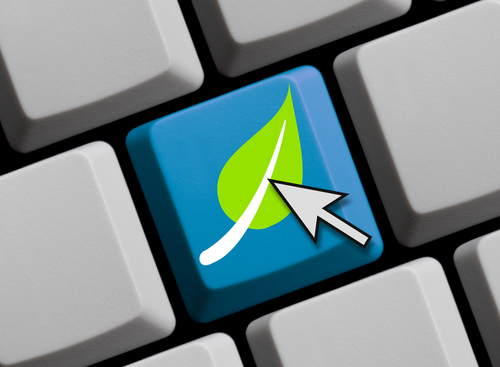Going paperless grows more popular each year. In 2016, consumers paid 56 percent of their bills online, ACI Worldwide research found. This represented a significant increase since 2010, with the number of bills paid via ACH rising 10 percent over that period and the number of bills paid via credit card doubling to 15 percent, while the number of bills paid via paper check fell 20 percent. Credit card bills are the most popular form of bill to pay online, with 46 percent of credit statements paid through online transactions, compared to 36 percent across other billing categories.
Environmental concerns are one of the big drivers behind the drive to paperless, but there are also significant personal benefits to going paperless. Here’s a look at four ways going paperless can benefit you, as well as some tips on how to make the transition to a paperless lifestyle.
Table of Contents
Environmental Impact
The average American generates 4.4 pounds of waste per day, for a national total of 254 million tons a year, according to the Environmental Protection Agency. Paper and paperboard account for 27 percent of this waste production. This includes newspapers, magazines, junk mail, paper packaging, and other paper products. Going paperless can help cut down your contribution to this waste generation, reducing pollution while saving trees and making a positive impact on the environment.
Convenience
Another major benefit of going paperless is convenience. Paying your bills by hand requires you to spend time filling out forms, writing checks, addressing envelopes, and taking trips to the mailbox, while costing you the price of stamps for each bill you pay. This amounts to hours of wasted time, a fact especially appreciated by businesses. For instance, accountants who use handwritten checks spend up to 10 hours or more a month per client on bill payment, while those who use the cloud for paperless billing spend one to three hours or less. You can save both yourself and your creditors many hours of labor by going paperless, a fact many companies appreciate by offering incentives for paperless customers.
Clearing Clutter
Paper billing also creates clutter, which can make you feel disorganized and make it harder than it should be to perform simple tasks. For instance, nearly one in four adults say they pay bills late and get charged extra fees because they can’t find their bills around the house. This type of hassle can become especially inconvenient at tax time when you have to dig through piles of paperwork to find the documents you need. Going paperless helps you reduce the clutter around your house, allowing you to be more organized and efficient.
Security
Going paperless also makes you less vulnerable to identity theft and fraud. Identity thieves systematically sift through your mail and trash looking for documents that can be used to steal your identity and your money, such as tax returns. Some even go so far as to steal mail from mailboxes before it gets picked up by postal carriers. Mail theft accounts for four percent of identity theft, according to the U.S. Postal Inspection Service. Going paperless can reduce the risk of your identity getting stolen.
How to Make the Move to Paperless
A first step towards going paperless is to create a digital filing system to store information you’ll be moving from paper to digital format. Choose where you plan to store your digital files, including choosing a backup system so you have an extra copy in case one version gets deleted. You can then begin scanning in your sensitive documents and shredding ones you don’t need. There are some documents you’ll want to continue to maintain in physical format, such as your birth certificate, and you should have a filing system for these as well.
The next step is to let the companies who send you bills know that you want to begin receiving paperless statements. The easiest way to do this is to sign up for paperless billing each time you begin receiving statements from a new company, but if you’re already receiving printed statements, it’s usually easy to switch to paperless through the company’s website or phone customer service representative. However, if you are in needed of a solution for paper, such as a customised printed folder there are companies that can help you with those printing needs so that you do not need to use your own paper.
Since you will be relying on digital paperwork, it’s especially important to take steps to guard yourself against identity theft. Use good digital security measures such as locking your smartphone with a password or facial recognition, keeping your software updated for the latest security fixes, and using secure wireless connections and websites. Purchase identity theft protection so you can be alerted if someone has compromised your identity and get expert help to recover your identity quickly.
To reduce the amount of paperwork you receive in the mail, you should also try to avoid junk mail. You can register for the national Do Not Mail list to reduce the amount of junk mail you receive.
There’s No Time to Waste
Going paperless can not only help the environment, but also help you pay your bills more conveniently, reduce clutter, and reduce risk of identity theft from stolen mail and trash. It’s easy to start going paperless today by setting up a digital filing system and signing up for digital bills.













